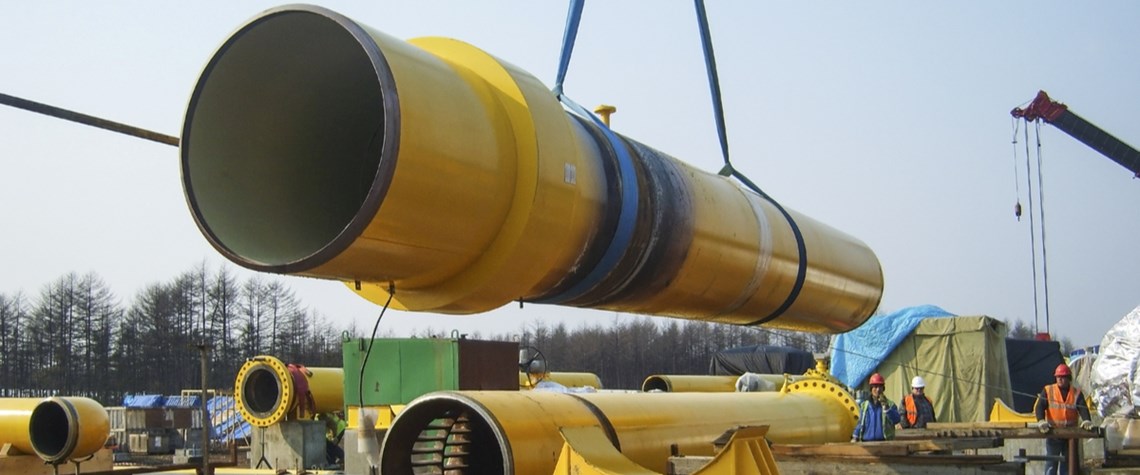Development of the Yuzhno-Kirinskoye gas field will be crucial to fulfil Russia’s obligation under its recent agreement with Beijing to provide 10bn m³/yr of gas from the island of Sakhalin through the proposed Power of Siberia 3 (PoS3) pipeline. But crippling sanctions are set to further complicate how it accesses the expertise of oil services providers key to bringing the project to fruition.
The recent contract signed between Russia’s state-controlled Gazprom and its Chinese peer CNPC would see Russian flows to China rise to 48bn m³/yr, with 38bn m³/yr exported through the main PoS1 pipeline and the rest through PoS3. The route from Sakhalin—rather than the previously discussed PoS2 from eastern, or even western, Siberia—is much shorter and closer to Chinese demand centres, as well as benefitting from existing infrastructure.
Additional gas compression can be added to the Sakhalin-Khabarovsk-Vladivostok pipeline, originally constructed to provide gas for Russia’s far east. “The pipeline’s maximum capacity is currently 6bn m³/yr, but, even now, it only transports 2-2.5bn m³/yr, simply because there are no customers. There is little demand in the far east,” Igor Yushkov, head analyst at the Russian Federal Foundation for National Energy Security, tells Petroleum Economist.
But, while PoS3 has logistical advantages, development of the Yuzhno-Kirinskoye deposit—with projected production capacity of 21bn m³/yr—is more challenging. The producing Kirinskoye field has just 6.6bn m³/yr in output, far short of underpinning its new Chinese commitments. And after the US introduced sanctions in 2015, Gazprom lost the opportunity to access necessary autonomous underwater production units from US service producers.
“Gazprom is currently trying to solve the question of whether it will look for an alternative supplier of similar equipment or develop this deposit in some other way,” Yushkov says. “Judging by the fact that the sides have signed a solid contract… it could be that they already have a solution of some sort in relation to Yuzhno-Kirinskoye deposit—maybe China can supply some technologies.”
Gazprom may have slightly more time than immediately obvious to solve its issues, as the expectation is that PoS3 volumes are not due to hit 10bn m³/yr immediately, but rather to build gradually, as with PoS1. For a project foreseen to deliver 38bn m³/r by the middle of the decade, it was only slated to deliver 10bn m³/yr in 2021, says Yushkov, although China took more due to gas prices—linked to oil with a nine-month lag—being more attractive than from some other supply sources. Further growth in PoS1 flows is planned for 2022 and 2023.
In contrast, 2020 was meant to see 5bn m³ delivered, but China took only 4.2bn m³, according to Yushkov, because of an abundance of cheap spot LNG. Part of the logic for this gradual step-up in flows is that the main reserves underpinning PoS1—the Eastern Siberian Chayandinskoye and Kovykta fields—are still under development.
Western route
Russia has not abandoned the concept of PoS2 or of being able to supply China not just from eastern Siberia but also from its more westerly regions, which would traditionally have supplied Europe. In February, the Russian and the Mongolian governments approved the route for the 50bn m³/yr Soyuz Vostok—or Union of the East—trans-Mongolia pipeline.
And it included a west-east interconnector in the project, allowing fields in western Siberian that supply Europe, or might have been expected to replenish any declines in volumes going west, to also head towards China. Europe’s commitment, in the wake of the war in Ukraine, to wean itself of Russian gas as soon as possible is only likely to improve the attractiveness of this element to Gazprom.
But Russia has not yet agreed any parameters with Beijing on PoS2 supply. “The Union of the East is being approved without a final decision on PoS2”—that is, without the customer commitment to take the gas—says Mikhail Krutikhin, analyst at consultancy Rusenergy. “The house is being built beginning from the roof.”








Comments